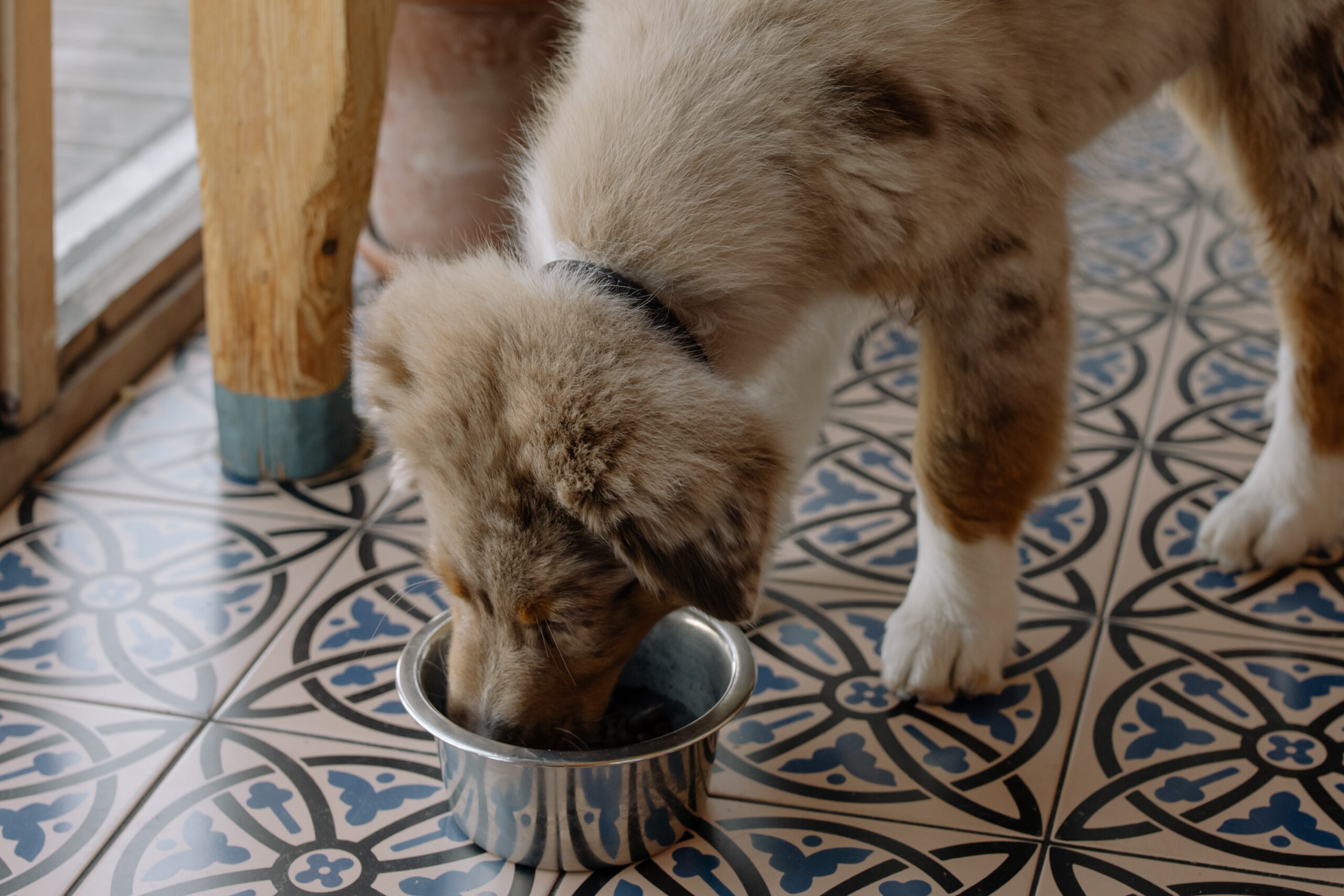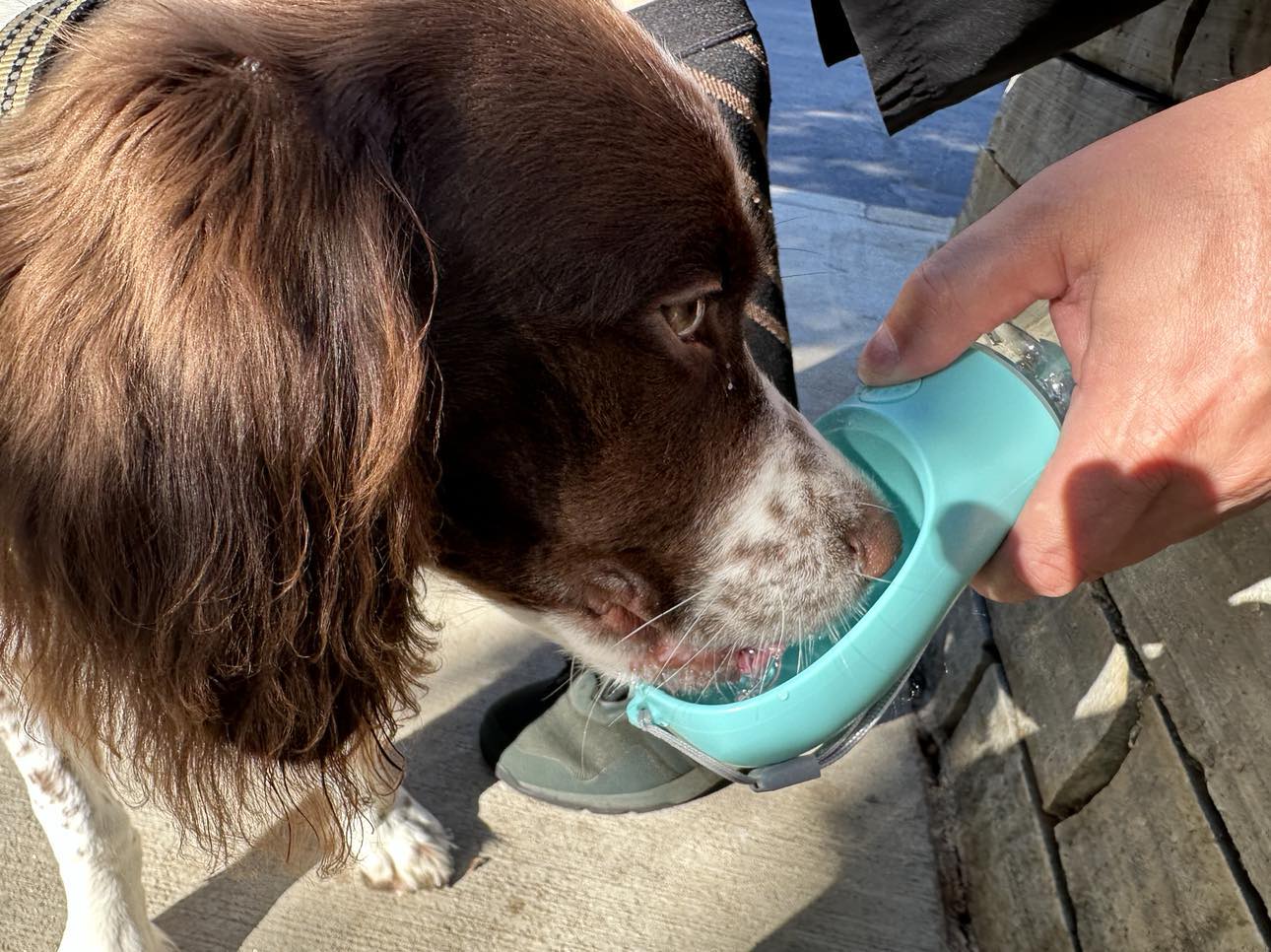The Growing Popularity of Homemade Dog Treats
In recent years, there has been a noticeable surge in the popularity of homemade dog treats among pet owners. This shift is driven by a growing awareness of the potential health benefits and nutritional advantages that come with making treats at home. Dog owners are increasingly realizing the importance of providing their furry friends with wholesome and delicious snacks made from natural and safe ingredients. As a result, the trend of crafting homemade treats has become a rewarding and enjoyable activity for pet parents around the world.
Benefits of Making Treats at Home
- Health and Nutritional Advantages: One of the primary reasons for the popularity of homemade dog treats is the ability to have complete control over the ingredients used. Unlike store-bought options, homemade treats allow pet owners to choose high-quality, fresh, and nutritious ingredients tailored to their dog’s specific dietary needs. By eliminating harmful additives, preservatives, and artificial flavors, homemade treats can contribute to improved overall health and well-being for our canine companions.
- Cost-Effectiveness: Making treats at home can also be a cost-effective alternative to constantly purchasing commercial treats. Buying individual ingredients in bulk and using kitchen staples like fruits, vegetables, and grains can significantly reduce the long-term treat expenses, without compromising on the quality of the treats.
- Bonding with Your Dog Through Baking: The process of preparing homemade dog treats presents a unique opportunity for pet owners to strengthen their bond with their four-legged friends. Baking together can be a fun and interactive experience for both the dog and the owner. The anticipation of receiving a homemade treat can create excitement and happiness for dogs, reinforcing the human-animal bond.
Overview of the Article’s Content
In this article, we will delve into the world of homemade dog treats, exploring the reasons why more pet owners are turning to their kitchen to pamper their pups. We will discuss the health and nutritional advantages of homemade treats, emphasizing the importance of using wholesome ingredients and avoiding harmful additives.
To help you get started on your homemade dog treat journey, we will provide a list of essential ingredients commonly used in dog treat recipes. From protein sources like lean meats and fish to healthy fats found in peanut butter and coconut oil, these ingredients form the foundation of nutritious and delicious treats.
In the heart of the article, we will showcase five top-notch homemade dog treat recipes that are both easy to prepare and full of flavor. Each recipe will be accompanied by step-by-step instructions, ensuring a smooth baking process for pet owners of all culinary skill levels.
Moreover, we will address essential aspects such as proper storage techniques and recommended shelf life to ensure your treats stay fresh and safe for consumption. Additionally, we will explore recipes tailored to meet special dietary needs, including options for dogs with allergies, weight management requirements, and senior dogs.
As we explore the world of homemade dog treats, we must also be aware of certain cautionary notes. We will identify toxic ingredients and foods to avoid in dog treats and emphasize the importance of consulting with a veterinarian before introducing new treats into your dog’s diet.
To add a touch of creativity, we will offer tips on using cookie cutters and molds to create attractive treat shapes and present ideas for decorating the treats with dog-friendly toppings.
In conclusion, we will recap the numerous benefits of homemade dog treats and encourage pet owners to give baking a try. By taking the time to craft treats at home, not only will dogs enjoy tastier and healthier snacks, but owners will also discover a rewarding and meaningful way to show their love and care for their beloved companions. So, let’s roll up our sleeves, put on our aprons, and embark on a delightful journey of homemade dog treats!
Why Choose Homemade Dog Treats?
Health and Nutritional Advantages
- Control over Ingredients: When it comes to your dog’s health, what they eat matters. Homemade dog treats give you complete control over the ingredients used in the recipes. You can carefully select high-quality, organic, and locally-sourced ingredients, ensuring that your furry companion gets the best nutrition possible. This control is particularly essential for dogs with food allergies or sensitivities, as you can easily avoid trigger ingredients and provide safe alternatives.
- Avoiding Harmful Additives and Preservatives: Many commercial dog treats contain additives, preservatives, and artificial flavors that may not be beneficial for your dog’s health. These additives are often used to extend shelf life but may have adverse effects on your pet’s well-being. By making treats at home, you can eliminate these unnecessary additives and preservatives, promoting a healthier diet for your dog.
- Catering to Specific Dietary Needs: Every dog has unique dietary requirements, and some may require special attention to their nutritional needs. Whether your dog needs a grain-free diet, a protein-rich treat for muscle support, or a low-fat option for weight management, homemade dog treats allow you to tailor recipes to meet their individual needs. This personalization ensures that your pet receives treats that contribute positively to their overall health and happiness.
Cost-Effectiveness
Making your dog’s treats at home can be a budget-friendly alternative to purchasing expensive store-bought treats. Buying ingredients in bulk and using common kitchen staples can significantly reduce the overall cost. Moreover, when you make treats in larger batches, you can store them for longer periods, saving you money on repeated trips to the store.
Bonding with Your Dog Through Baking
The act of baking homemade dog treats goes beyond just providing nourishment. It creates a special bonding experience between you and your beloved canine companion. Dogs are highly perceptive and responsive to their owners’ emotions, and engaging in activities like baking together strengthens the emotional connection. As you mix, shape, and bake the treats, your dog will likely be by your side, eagerly awaiting the delicious results. This shared experience fosters trust, affection, and loyalty, making your relationship with your pet even more fulfilling.
Moreover, baking homemade treats can be a fun and rewarding activity for the entire family. Children can actively participate in the process, learning about responsible pet care and the importance of nutrition for animals. This bonding activity also provides a wonderful opportunity for training and reinforcing good behavior in your dog. You can use the treats as positive reinforcement during training sessions, making it a positive experience for both you and your furry friend.
In conclusion, choosing homemade dog treats offers numerous advantages that contribute to the well-being of your pet. From ensuring better nutrition and catering to specific dietary needs to saving on costs and strengthening the bond between you and your dog, homemade treats are a win-win solution. So, roll up your sleeves, grab your apron, and treat your furry companion to a delightful array of wholesome and delicious homemade dog treats. Your dog will surely thank you with wagging tails and slobbery kisses!
Essential Ingredients for Homemade Dog Treats
Protein Sources
- Lean Meats (Chicken, Turkey, Beef): Lean meats are an excellent source of protein for dogs, providing essential amino acids necessary for muscle development and overall health. When using chicken, turkey, or beef, make sure to remove any excess fat and bones before incorporating them into your treat recipes. Cook the meat thoroughly to ensure it’s safe for your furry friend.
- Fish (Salmon, Tuna): Fish is another fantastic protein option that also contains beneficial omega-3 fatty acids, promoting healthy skin and a shiny coat in dogs. Salmon and tuna are popular choices, but ensure they are cooked and deboned before use. Avoid using any fish that may contain bones, such as small sardines, to prevent choking hazards.
Carbohydrates
- Whole Grains (Oats, Brown Rice): Whole grains like oats and brown rice are excellent sources of carbohydrates for your dog’s homemade treats. They provide essential fiber for digestive health and help sustain energy levels. Opt for rolled oats or cooked brown rice for easy digestion and to avoid any potential gluten-related issues.
- Sweet Potatoes: Sweet potatoes are a nutritious and tasty carbohydrate option for homemade dog treats. They are rich in vitamins and minerals like beta-carotene, which supports eye health. To prepare sweet potatoes for your treats, cook and mash them to a smooth consistency.
Fruits and Vegetables
- Apples: Apples are a dog-friendly fruit, providing vitamins A and C and dietary fiber. Before using apples in your recipes, remove the seeds and core, as they contain small amounts of cyanide, which can be harmful in large quantities. Slice or chop the apples finely for even distribution in the treats.
- Carrots: Carrots are an excellent low-calorie treat option that dogs love. They are rich in beta-carotene, promoting good vision and a healthy immune system. Grate or dice the carrots to blend them easily into your treat mixture.
- Pumpkin: Pumpkin is a great ingredient for homemade dog treats due to its high fiber content and potential to aid in digestive health. Use pureed pumpkin (canned or fresh) in recipes to add moisture and nutrients to the treats.
Healthy Fats
- Peanut Butter (Xylitol-free): Peanut butter is a beloved favorite among dogs and provides a good source of healthy fats and protein. Ensure you use peanut butter that is free from the artificial sweetener xylitol, as it can be toxic to dogs. Natural, unsweetened peanut butter is the safest option for your canine companion.
- Coconut Oil: Coconut oil is a healthy fat option that offers various benefits for dogs. It can support skin health, aid digestion, and even help with weight management. When using coconut oil in treat recipes, melt it to a liquid state for easy mixing.
By incorporating these essential ingredients into your homemade dog treats, you can provide your furry friend with a variety of delicious and nutritious snacks. Always remember to introduce new ingredients gradually and monitor your dog for any signs of allergies or sensitivities. With these wholesome ingredients at hand, you’re ready to embark on a culinary journey that will keep your dog’s tail wagging with delight.
Top 5 Homemade Dog Treat Recipes
Easy Peanut Butter Banana Biscuits
- Ingredients:
- 1 ripe banana, mashed
- 1/2 cup natural peanut butter (Xylitol-free)
- 1 1/2 cups whole wheat flour
- 1/2 cup rolled oats
- 1/4 cup water
- Step-by-step instructions: a. Preheat your oven to 350°F (175°C) and line a baking sheet with parchment paper. b. In a large mixing bowl, combine the mashed banana and peanut butter until smooth. c. Gradually add the whole wheat flour and rolled oats to the banana-peanut butter mixture, mixing well to form a dough. d. If the dough is too dry, add water gradually until it reaches a workable consistency. e. Roll out the dough on a lightly floured surface to about 1/4 inch thickness. f. Use cookie cutters to cut out shapes or simply slice the dough into bite-sized pieces. g. Place the biscuits on the prepared baking sheet and bake for approximately 12-15 minutes or until they turn golden brown. h. Allow the biscuits to cool completely before serving them to your dog. Store any leftovers in an airtight container.
Grain-Free Salmon Sweet Potato Balls
- Ingredients:
- 1 can (6 oz) canned salmon, drained and flaked
- 1 cup cooked and mashed sweet potato
- 1 1/2 cups chickpea flour (garbanzo bean flour)
- Step-by-step instructions: a. Preheat your oven to 350°F (175°C) and line a baking sheet with parchment paper. b. In a mixing bowl, combine the flaked salmon and mashed sweet potato until well mixed. c. Gradually add the chickpea flour to the mixture, stirring until a dough forms. d. Take small portions of the dough and roll them into bite-sized balls. e. Place the balls on the prepared baking sheet and lightly flatten them with your fingers. f. Bake the treats for about 15-20 minutes or until they are firm and slightly browned on the edges. g. Allow the salmon sweet potato balls to cool completely before serving them to your dog. Store any extras in the refrigerator.
Chicken and Vegetable Chewies
- Ingredients:
- 1 cup cooked and shredded chicken (without bones and skin)
- 1/2 cup grated carrots
- 1/2 cup grated zucchini
- 1/2 cup peas (fresh or thawed if frozen)
- 1 cup whole wheat flour
- 1/4 cup chicken broth (low-sodium)
- Step-by-step instructions: a. Preheat your oven to 350°F (175°C) and line a baking sheet with parchment paper. b. In a mixing bowl, combine the shredded chicken, grated carrots, grated zucchini, and peas. c. Gradually add the whole wheat flour to the mixture, mixing until well incorporated. d. Pour in the chicken broth and continue mixing until a dough forms. e. Roll out the dough on a floured surface to about 1/4 inch thickness. f. Use a cookie cutter or a knife to cut out small shapes or squares from the dough. g. Place the chewies on the prepared baking sheet and bake for approximately 15-18 minutes or until they are firm and slightly browned. h. Allow the chicken and vegetable chewies to cool completely before serving them to your dog. Store any leftovers in an airtight container.
Apple Carrot Crunchies
- Ingredients:
- 1 cup grated apple (remove seeds and core)
- 1 cup grated carrot
- 1 1/2 cups oat flour
- 1/2 cup unsweetened applesauce
- 1/4 cup water
- Step-by-step instructions: a. Preheat your oven to 350°F (175°C) and line a baking sheet with parchment paper. b. In a mixing bowl, combine the grated apple and grated carrot. c. Add the oat flour and mix well to form a crumbly texture. d. Stir in the unsweetened applesauce and water, and continue mixing until a dough forms. e. Roll out the dough on a floured surface to about 1/4 inch thickness. f. Cut the dough into small squares or use a cookie cutter to create desired shapes. g. Place the crunchies on the prepared baking sheet and bake for approximately 15-20 minutes or until they become crisp and golden. h. Allow the apple carrot crunchies to cool completely before offering them to your dog. Store any extras in an airtight container.
Pumpkin Oatmeal Cookies
- Ingredients:
- 1 cup canned pumpkin puree (unsweetened)
- 1/4 cup peanut butter (Xylitol-free)
- 1 3/4 cups whole wheat flour
- 1 1/2 cups rolled oats
- 1 teaspoon cinnamon
- Step-by-step instructions: a. Preheat your oven to 350°F (175°C) and line a baking sheet with parchment paper. b. In a large mixing bowl, combine the pumpkin puree and peanut butter until well blended. c. Gradually add the whole wheat flour, rolled oats, and cinnamon to the mixture, stirring until a dough forms. d. Roll out the dough on a floured surface to about 1/4 inch thickness. e. Use cookie cutters to cut out shapes or slice the dough into bite-sized pieces. f. Place the cookies on the prepared baking sheet and bake for approximately 12-15 minutes or until they turn golden brown. g. Allow the pumpkin oatmeal cookies to cool completely before serving them to your dog. Store any leftovers in an airtight container.
With these delightful and healthy homemade dog treat recipes, you can now pamper your four-legged friend with a variety of delicious flavors while ensuring they receive the best nutrition possible. Always remember to serve treats in moderation, considering your dog’s size and daily calorie intake. Your furry friend will undoubtedly appreciate the love and effort you put into creating these scrumptious snacks!
Storage and Shelf Life
Proper Storage Techniques
After putting in the effort to create homemade dog treats, it’s crucial to store them properly to maintain their freshness and ensure your furry friend gets the best taste and nutrition. Follow these proper storage techniques:
- Allow the Treats to Cool Completely: Before storing the treats, make sure they have cooled down completely. Warm treats can create condensation in the container, leading to mold growth and spoilage.
- Use Airtight Containers: Store the treats in airtight containers or resealable bags to prevent exposure to air and moisture. Oxygen and moisture can lead to staleness or spoilage.
- Label and Date: It’s a good practice to label the container with the treat’s name and the date of preparation. This way, you can easily identify and keep track of the shelf life.
- Refrigeration for Fresh Ingredients: Treats containing fresh ingredients like meats, fruits, or vegetables should be refrigerated. This helps prolong their shelf life and maintain their quality.
- Freezing for Longer Storage: If you’ve made a large batch, freezing is an excellent option. Freeze treats in batches, so you can take out small amounts as needed. Use freezer-safe containers or bags for freezing.
Recommended Shelf Life for Different Treats
The shelf life of homemade dog treats varies based on their ingredients and moisture content. Here are some general guidelines:
- Refrigerated Treats: Treats with fresh meats or dairy should be consumed within 1 to 2 weeks when refrigerated.
- Room Temperature Treats: Biscuits or cookies made with dry ingredients can last for up to 2 to 3 weeks when stored at room temperature in airtight containers.
- Frozen Treats: When properly stored in the freezer, homemade dog treats can remain good for 2 to 3 months.
Always remember to check the recipe or consult the specific storage guidelines provided for each treat to ensure the best quality and freshness.
Avoiding Spoilage and Foodborne Illnesses
To keep your dog safe and healthy, it’s essential to avoid spoilage and potential foodborne illnesses:
- Regular Inspection: Regularly check the treats for any signs of mold, discoloration, or off smells. If you notice any abnormalities, discard the treats immediately.
- Safe Ingredients: Be cautious about using ingredients that might spoil quickly, such as dairy or eggs. If you choose to use these ingredients, make smaller batches and monitor the treats closely.
- Hygiene: Maintain proper hygiene during treat preparation. Wash your hands and clean all utensils and surfaces thoroughly before and after handling ingredients.
- Portion Control: While homemade treats are healthier, they are still calorie-dense. Avoid overfeeding and practice portion control to prevent weight gain in your furry friend.
By following these storage and safety guidelines, you can ensure that your homemade dog treats remain fresh, safe, and delicious for your four-legged companion. The extra effort you put into creating these treats will undoubtedly be rewarded with a wagging tail and a happy, healthy dog!
Homemade Treats for Special Dietary Needs
Allergies and Sensitivities
- Gluten-Free Options: Just like humans, some dogs may have gluten sensitivities or allergies. To cater to these needs, you can create delicious gluten-free treats using alternative flours like rice flour, chickpea flour, or oat flour. Here’s a simple gluten-free dog treat recipe:
Gluten-Free Peanut Butter Bites:- Ingredients:
- 1 cup natural peanut butter (Xylitol-free)
- 1 cup oat flour
- 2 ripe bananas, mashed
- Instructions: a. Preheat your oven to 350°F (175°C) and line a baking sheet with parchment paper. b. In a mixing bowl, combine the mashed bananas and peanut butter until smooth. c. Gradually add the oat flour and mix well to form a dough. d. Roll the dough into small balls and place them on the prepared baking sheet. e. Flatten each ball slightly with a fork or your fingers. f. Bake for about 12-15 minutes or until they are golden brown. g. Allow the bites to cool before serving. Store any leftovers in an airtight container.
- Ingredients:
- Grain-Free Treats: For dogs with grain sensitivities or on grain-free diets, there are numerous grain-free treat options available. Grain-free flours like almond flour, coconut flour, or potato flour can be used as substitutes. Here’s a simple grain-free recipe:
Grain-Free Chicken and Sweet Potato Biscuits:- Ingredients:
- 1 cup cooked and shredded chicken (without bones and skin)
- 1 cup cooked and mashed sweet potato
- 1/4 cup coconut flour
- Instructions: a. Preheat your oven to 350°F (175°C) and line a baking sheet with parchment paper. b. In a mixing bowl, combine the shredded chicken and mashed sweet potato. c. Gradually add the coconut flour and mix well to form a dough. d. Roll out the dough on a floured surface and cut out shapes using a cookie cutter. e. Place the biscuits on the prepared baking sheet and bake for about 15-18 minutes or until they are firm and slightly browned. f. Let the biscuits cool before serving. Store any extras in the refrigerator.
- Ingredients:
Weight Management Treats
Weight management treats can help control calorie intake while still providing a tasty reward for your dog. Here’s a low-calorie treat recipe:
Carrot and Green Bean Crunchies:
- Ingredients:
- 1 cup grated carrots
- 1 cup chopped green beans
- 1/2 cup unsweetened applesauce
- 1 cup oat flour
- Instructions: a. Preheat your oven to 350°F (175°C) and line a baking sheet with parchment paper. b. In a mixing bowl, combine the grated carrots, chopped green beans, and applesauce. c. Gradually add the oat flour and mix well to form a dough. d. Roll the dough into small balls and place them on the prepared baking sheet. e. Flatten each ball slightly with a fork or your fingers. f. Bake for about 12-15 minutes or until the crunchies are golden brown and crisp. g. Allow the treats to cool before serving. Store any leftovers in an airtight container.
Senior Dog-Friendly Recipes
Senior dogs may have specific dietary needs, such as lower calorie and sodium requirements. Here’s a senior dog-friendly treat recipe:
Soft and Chewy Blueberry Bites:
- Ingredients:
- 1 cup blueberries
- 1/2 cup unsweetened applesauce
- 1/4 cup coconut oil (melted)
- 1 1/2 cups oat flour
- Instructions: a. Preheat your oven to 350°F (175°C) and line a baking sheet with parchment paper. b. In a blender or food processor, blend the blueberries until pureed. c. In a mixing bowl, combine the blueberry puree, unsweetened applesauce, and melted coconut oil. d. Gradually add the oat flour and mix well to form a soft dough. e. Drop spoonfuls of the dough onto the prepared baking sheet. f. Bake for about 10-12 minutes or until the bites are set and slightly golden on the edges. g. Allow the bites to cool before serving. Store any extras in the refrigerator.
By tailoring homemade treats to meet specific dietary needs, you can ensure that your beloved senior or allergy-sensitive dog can indulge in delicious snacks without compromising their health. Always consult your veterinarian if you have any concerns about your dog’s dietary requirements and ingredient choices. With these special recipes, your furry companion can enjoy a variety of treats suitable for their unique needs and preferences.
Cautionary Notes and Foods to Avoid
Toxic Ingredients for Dogs
As much as we want to pamper our dogs with tasty treats, it’s essential to be aware of certain foods that are toxic to them. Avoid using these ingredients in homemade dog treats:
- Chocolate: Chocolate contains theobromine and caffeine, which are toxic to dogs and can lead to serious health issues.
- Grapes and Raisins: These fruits can cause kidney failure in dogs, even in small amounts.
- Onions and Garlic: These foods contain compounds that can damage a dog’s red blood cells, leading to anemia.
- Xylitol: This artificial sweetener is found in some sugar-free products and can be lethal to dogs even in small quantities.
- Macadamia Nuts: Macadamia nuts can cause weakness, tremors, and other neurological problems in dogs.
- Avocado: Avocado contains persin, which can be harmful to dogs in large amounts.
- Alcohol: Alcohol consumption can lead to poisoning in dogs, causing vomiting, disorientation, and even coma.
Foods to Be Cautious About Using in Treats
While many human foods are safe for dogs in moderation, it’s important to exercise caution and avoid excessive use of certain ingredients, as they may cause digestive issues or weight gain:
- Peanut Butter: While peanut butter is generally safe for dogs, it is high in calories and fat. Use it in moderation, especially if your dog is on a weight management plan.
- Cheese: Cheese is often enjoyed by dogs, but it is also high in fat and lactose. Some dogs may be sensitive to dairy, leading to digestive upset.
- Fatty Meats: High-fat meats can cause pancreatitis in dogs, which is a severe inflammation of the pancreas.
- Spices and Seasonings: Avoid using spices like onion powder, garlic powder, and excessive salt in treats, as they can be harmful to dogs.
Consulting with a Veterinarian
Before introducing any new ingredients or treats into your dog’s diet, it’s crucial to consult with your veterinarian, especially if your dog has specific health conditions or dietary requirements. They can provide personalized advice and help you choose ingredients that best suit your dog’s needs.
If your dog has known allergies or sensitivities, your veterinarian can guide you on suitable alternative ingredients to use in homemade treats. Additionally, they can recommend portion sizes and frequency of treat-giving to ensure your dog maintains a balanced diet and a healthy weight.
Remember that each dog is unique, and what may be safe and healthy for one dog may not be suitable for another. Prioritize your dog’s health and well-being by seeking professional advice and ensuring that the treats you provide align with their specific needs.
By exercising caution and being informed about potential hazards, you can continue to create homemade dog treats that are not only delicious but also safe and beneficial for your beloved canine companion. Providing treats in a responsible and thoughtful manner will keep your dog happy and healthy for years to come.
Creative Shapes and Presentation
Using Cookie Cutters and Molds
Making homemade dog treats not only allows you to control the ingredients but also presents an opportunity to get creative with shapes and designs. Using cookie cutters and molds can add a delightful touch to your treats, making them visually appealing to both you and your furry friend.
- Cookie Cutters: Invest in a variety of dog-themed cookie cutters, such as paw prints, bones, or dog-shaped figures. You can find these cookie cutters at specialty pet stores or online. Press the cookie cutter into the rolled-out dough to create beautifully shaped treats.
- Molds: Silicone molds designed specifically for dog treats are another excellent option. These molds come in various shapes and sizes, from simple hearts to intricate dog faces. Pour the treat mixture into the molds, then pop them out once they’re set for adorable treats that are sure to impress.
- Personalized Shapes: You can also create custom shapes using everyday kitchen tools. For example, use a pizza cutter to make mini squares or rectangles, or use a knife to cut out the initial of your dog’s name.
Decorating Treats with Dog-Friendly Toppings
Adding a touch of decoration to your homemade dog treats can elevate their appeal and make them even more enticing for your furry friend. Consider using dog-friendly toppings to enhance the treats:
- Yogurt Drizzle: Plain, unsweetened yogurt can be a safe and tasty drizzle for dog treats. Melt the yogurt slightly and use a spoon or a piping bag to create decorative lines or patterns on the treats.
- Shredded Coconut: Dogs often enjoy the taste and texture of shredded coconut. Sprinkle a small amount over the treats to add a tropical touch.
- Carob or Dog-Friendly Chocolate: Carob is a dog-safe alternative to chocolate, which is toxic to dogs. Melt carob chips and drizzle them over the treats for a delicious and visually appealing decoration.
- Fresh Fruit: Some dog-safe fruits like blueberries or diced strawberries can add a burst of color and natural sweetness to your treats.
Remember to use decorations in moderation and avoid ingredients that may be harmful to dogs. While decorating can be fun and creative, the primary focus should always be on the nutritional value and safety of the treats.
By using cookie cutters, molds, and dog-friendly toppings, you can turn simple homemade dog treats into beautiful and personalized delights. Your dog will appreciate the extra effort you put into making their treats look as special as they taste. With creative shapes and presentation, your furry friend’s treats will surely be the envy of all the neighborhood pups!
Conclusion
Recap of the Benefits of Homemade Dog Treats
Throughout this article, we’ve explored the wonderful world of homemade dog treats and the numerous benefits they offer. By making treats at home, you have the power to provide your furry friend with:
- Better Nutrition: With control over ingredients, you can ensure that your dog receives a wholesome and nutritious diet tailored to their specific needs, whether it’s grain-free, gluten-free, or weight management treats.
- Safe Ingredients: By avoiding harmful additives and preservatives found in commercial treats, you can protect your dog from potential health risks and sensitivities.
- Bonding and Fun: Baking treats together can be a delightful bonding experience for you and your dog, strengthening the special connection you share.
- Cost-Effectiveness: Homemade treats can be budget-friendly, and preparing treats in larger batches can save you money in the long run.
- Personalized Treats: Catering to your dog’s taste preferences and dietary requirements allows you to offer treats that are as unique as your furry friend.
Encouragement to Try Baking for Your Dog
If you haven’t already dabbled in the world of homemade dog treats, we encourage you to embark on this rewarding journey. The joy of seeing your dog’s excitement and appreciation for the treats you create is truly heartwarming. As you explore new recipes and get creative with shapes and decorations, you’ll find that the process becomes an enjoyable part of your daily routine.
Remember that making treats at home doesn’t have to be complicated. Start with simple recipes and gradually experiment with new ingredients. The internet is a treasure trove of dog treat recipes, but don’t hesitate to come up with your own concoctions based on your dog’s tastes and dietary needs.
Final Tips for Making the Best Treats at Home
As you embark on your homemade dog treat journey, here are some final tips to ensure your treats are a hit with your canine companion:
- Measure Ingredients Accurately: Follow recipes carefully and measure ingredients accurately to achieve the right consistency and taste.
- Use Fresh Ingredients: Opt for fresh and high-quality ingredients to ensure the best nutritional value for your dog.
- Monitor Portion Sizes: Treats should complement your dog’s regular diet, so be mindful of portion sizes to maintain a healthy weight.
- Seek Veterinary Advice: If your dog has any health conditions or allergies, consult your veterinarian for suitable treat options.
- Storage is Key: Properly store treats to maintain freshness and prevent spoilage. Follow the storage guidelines provided in this article.
- Experiment and Have Fun: Don’t be afraid to get creative with shapes, decorations, and flavors. Treat-making should be a fun and enjoyable experience for both you and your dog.
In conclusion, making homemade dog treats is a rewarding way to show your love and care for your furry companion. With the knowledge gained from this article, you can confidently whip up a variety of nutritious, delicious, and safe treats that will leave your dog begging for more. So, roll up your sleeves, preheat the oven, and get ready to embark on a delightful culinary adventure with your four-legged friend by your side!
Resources and References
List of Recommended Websites and Books for Homemade Dog Treat Recipes
- Websites:
- Rover.com: Rover offers a wide range of homemade dog treat recipes, categorized by ingredients and dietary needs. Their blog is a valuable resource for dog lovers seeking creative and healthy treat ideas. (Website: www.rover.com/blog)
- DogTipper: DogTipper provides a collection of homemade dog treat recipes along with helpful tips and tricks for successful treat-making at home. The website also offers information on dog health and wellness. (Website: www.dogtipper.com)
- AllRecipes: Although primarily known for human recipes, AllRecipes offers a section dedicated to homemade dog treats, featuring user-reviewed recipes that are easy to follow and prepare. (Website: www.allrecipes.com)
- Books:
- “The Healthy Homemade Dog Treat Recipe Book” by Charlie Fox: This book contains a variety of nutritious and delicious homemade dog treat recipes for all occasions, including grain-free and allergy-friendly options.
- “Dinner for Dogs: 50 Home-Cooked Recipes for a Happy, Healthy Dog” by Henrietta Morrison: While not exclusively focused on treats, this book provides an array of home-cooked meals and snacks that are suitable for treating your dog.
- “Doggy Desserts: Homemade Treats for Happy, Healthy Dogs” by Cheryl Gianfrancesco: This book offers a collection of dessert-inspired dog treat recipes using safe and wholesome ingredients.
Links to Further Information on Canine Nutrition
- American Kennel Club (AKC) – Nutrition Tips: The AKC provides valuable information on dog nutrition, including guidelines for selecting commercial dog foods and homemade recipes. (Website: www.akc.org/dog-breeds/nutrition)
- Association of American Feed Control Officials (AAFCO): The AAFCO establishes and regulates pet food standards. Their website offers information on interpreting pet food labels and understanding nutritional requirements. (Website: www.aafco.org)
- Tufts University Cummings Veterinary Medical Center – Petfoodology: Petfoodology is a comprehensive resource on pet nutrition, including articles and FAQs about dog nutrition. (Website: www.vetnutrition.tufts.edu/petfoodology)
- World Small Animal Veterinary Association (WSAVA) – Global Nutrition Committee: The WSAVA offers resources and guidelines on nutrition and feeding practices for dogs and cats. (Website: www.wsava.org/WSAVA/media/PDF_old/WSAVA-GNC-Webpage-Nutrition-Resources.pdf)
When exploring online resources related to canine nutrition, it’s essential to verify the credibility of the source and consult with your veterinarian for personalized advice on your dog’s specific dietary needs.
By referring to these recommended websites, books, and additional resources, you can continue to expand your knowledge of homemade dog treats and canine nutrition, ensuring that your furry companion enjoys a happy, healthy, and tail-wagging life.










